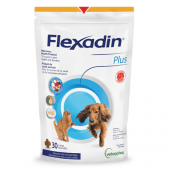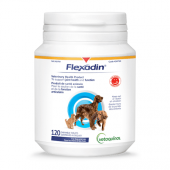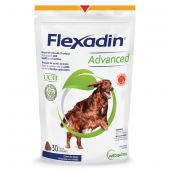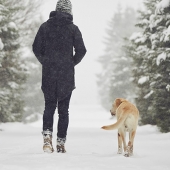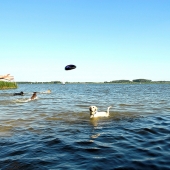If your dog could talk, they could let you know when they’re hurt and where. Unfortunately, most dogs instinctively tend to hide their pain not to appear weak to other animals and predators. This means it’s up to you to figure out when something’s wrong with your furry friend by picking up subtle clues like the ones below.
Crying, whining, or whimpering could indicate severe pain.
If your dog starts vocalizing, it could be a sign that they are in significant pain. Contact your veterinary clinic immediately for advice and, if necessary, schedule an emergency visit.
Physical signs of pain in dogs
Your dog is having mobility issues.
Any change in posture or signs that your dog is having trouble moving could be due to joint pain or an injury. These include limping, tucking their tail, hunching, having difficulty lying down or getting up, avoiding stairs and being reluctant to go for a walk. You may also notice your dog seems restless when resting or sleeping, as if they’re struggling to find a comfortable position.
Your dog’s facial expression and ear placement change.
Just as humans may wince or tense up when hurt, your dog may show pain through involuntary facial expressions and muscle contractions. You should watch for dilated pupils, squinting, pulled-back ears, and grimacing, which are all classic signs of pain.
Your dog is panting.
Acute pain causes an increase in heart rate and breathing. While you may not know your dog’s resting heart rate for comparison, you should be concerned if they start panting heavily with no apparent cause, such as hot weather or exercise.
Behavioural signs of pain in dogs
Your dog has a change in appetite.
Dogs usually love to eat. If yours appears less hungry, they could be having trouble eating or swallowing, be suffering from an upset stomach or even have an injury that makes it difficult for them to reach their food bowl. While less common, a sudden increase in appetite is also a cause for concern, as it could be a symptom of certain medical conditions such as Cushing’s disease or diabetes.
Your dog doesn’t seem like their usual self.
Any sudden change to your dog’s usual behaviour deserves attention, such as a house-trained pet that starts frequently urinating or defecating inside the house or a typically affectionate one that shies away from being held. The same goes for a docile and friendly dog that acts aggressively or snaps for no apparent reason. Be careful when examining such a pet for signs of injury, as they may feel threatened and bite in response.
Your dog is grooming excessively.
When hurt, dogs will often bite, gnaw, or lick the affected area in response—even when the issue is internal. If your dog is obsessively grooming a specific part of their body, check for signs of injury or contact your veterinary clinic to determine the underlying cause.

